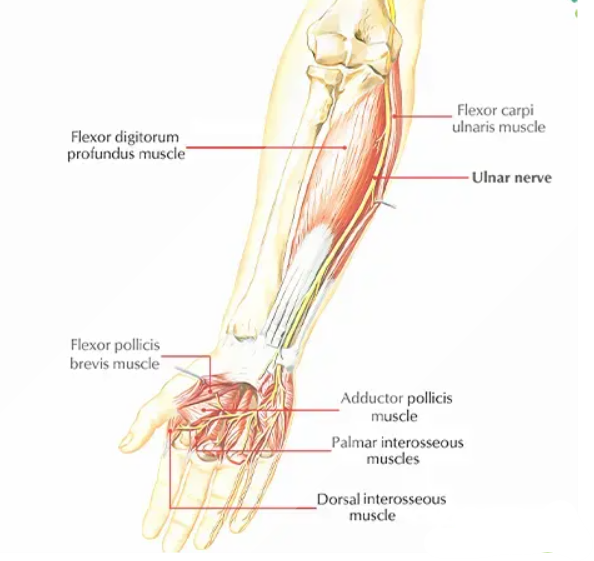What is Ulnar Nerve Injury?
The ulnar nerve is a major nerve that runs from the neck down to the fingers in the forearm and hand. An ulnar nerve injury is damage or trauma to this nerve that can occur anywhere along its path.
Symptoms OF Ulnar Nerve Injury
- Numbness & Tingling
- Weaknesss
- Difficulty gripping objects
- Pain
- Muscle Atrophy
Causes of Ulnar Nerve Injury
- Trauma / Direct Injury
- Compression (Entrapment)
- Extreme bending of the elbow
- Sudden pulling on the arm
- Diabetes (leading to peripheral neuropathy)
- Rheumatoid arthritis (joint swelling compressing the nerve)
Diagnosis Of Ulnar Nerve Injury
- Physical examination (Tinel’s sign at the elbow)
- Nerve conduction studies (measuring nerve signal speed)
- Electromyography (EMG) to assess muscle function
Treatment Of Ulnar Nerve Injury
Medications: NSAIDs, Local Corticosteroid Injection, Oral Steroids, Vitamin supplements, Muscle relaxants,Neuropathic pain medicine.
Note: The medication should not be taken without the doctor's prescription.
Physiotherapy Treatment For Ulnar Nerve Injury
- TENS (Transcutaneous Electrical Nerve Stimulation): Reduces pain by blocking pain signals.
- Curapod Light Therapy: Red and near-infrared light stimulate healing, reduce inflammation, and improve circulation.
- Ultrasound Therapy: Promotes tissue healing and reduces inflammation.
- Gentle passive and active stretching exercises to maintain joint mobility and prevent stiffness, especially in the elbow and fingers.
- Strengthening Exercises: Once pain and inflammation are controlled, focus shifts to strengthening affected muscles:
- Nerve gliding exercises: Special exercises to help the ulnar nerve move freely through the cubital tunnel and prevent adhesions.
- Posture Correction & Ergonomic Advice
- Functional Training
- Manual Therapy
Pateint Education
Ulnar nerve injury occurs when the ulnar nerve, which controls sensation and movement in parts of the hand and forearm, becomes compressed, stretched, or damaged, leading to symptoms like numbness, tingling, pain, and weakness in the little and ring fingers. Effective treatment is important to prevent permanent damage and improve function. Patients should avoid putting pressure on the elbow, maintain proper posture, and perform prescribed nerve gliding and strengthening exercises regularly. Using splints, managing pain with medications, and making lifestyle adjustments—such as avoiding heavy lifting and repetitive elbow bending—help support recovery. Early medical attention is essential if symptoms worsen or muscle wasting appears, and with consistent care, most patients experience significant improvement over time.


